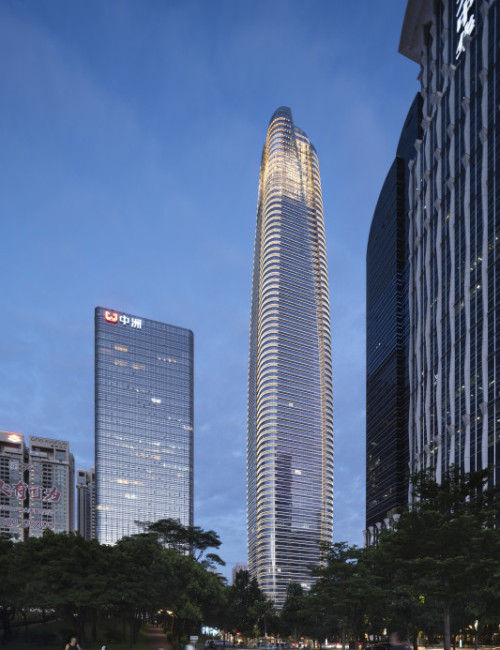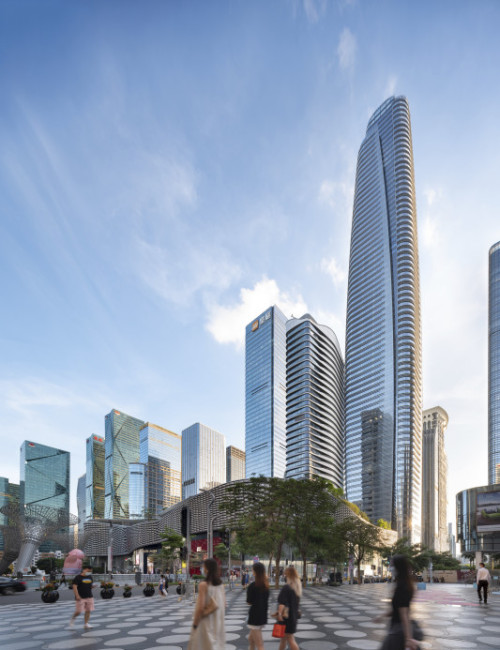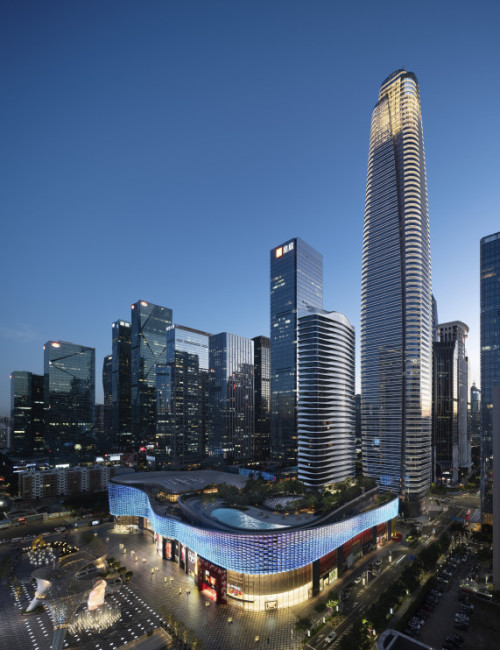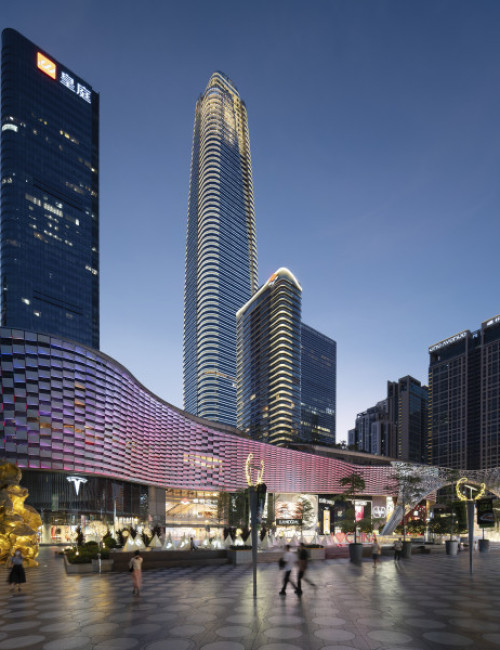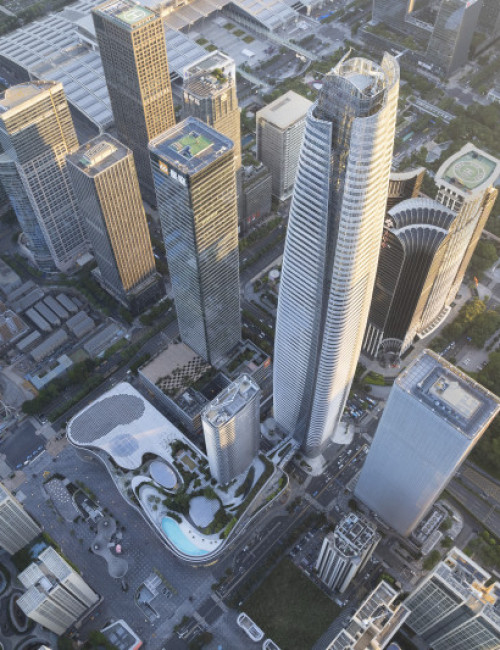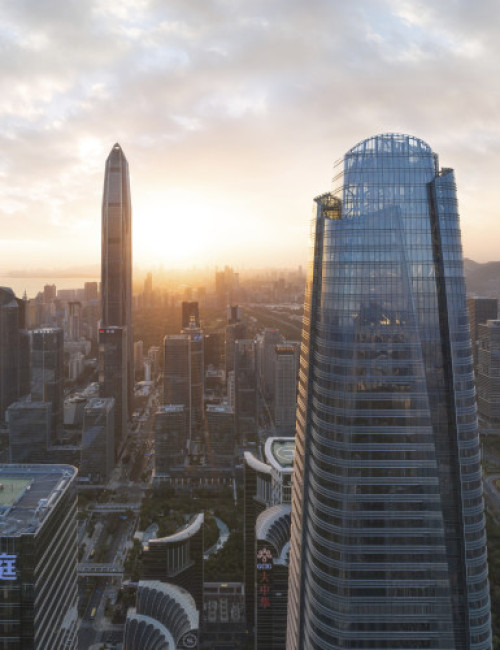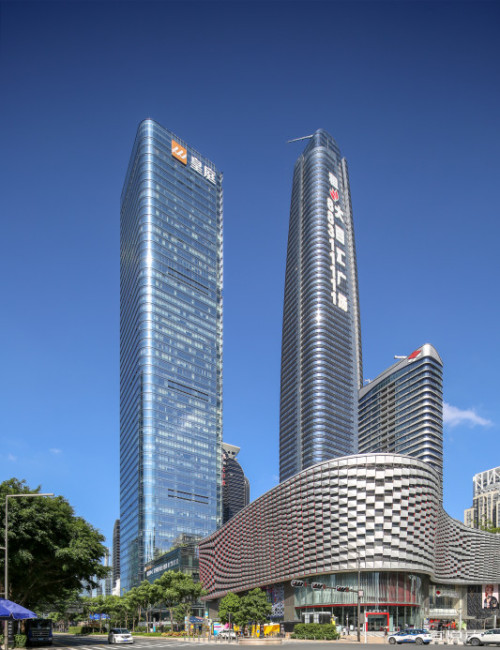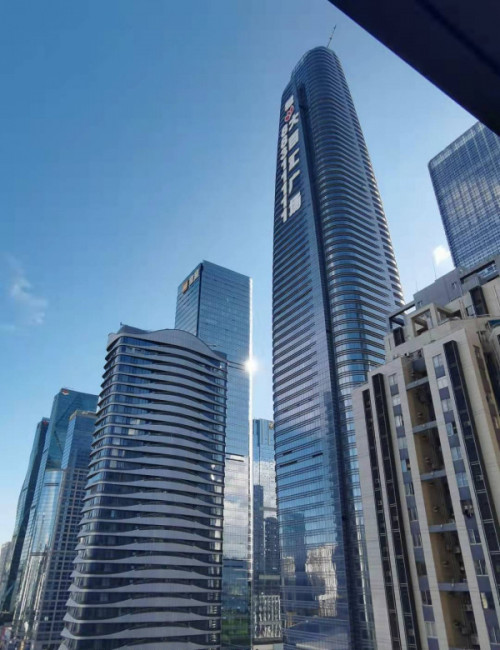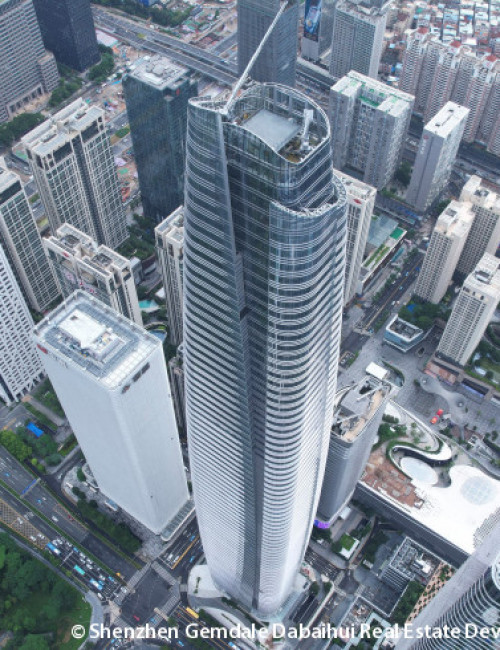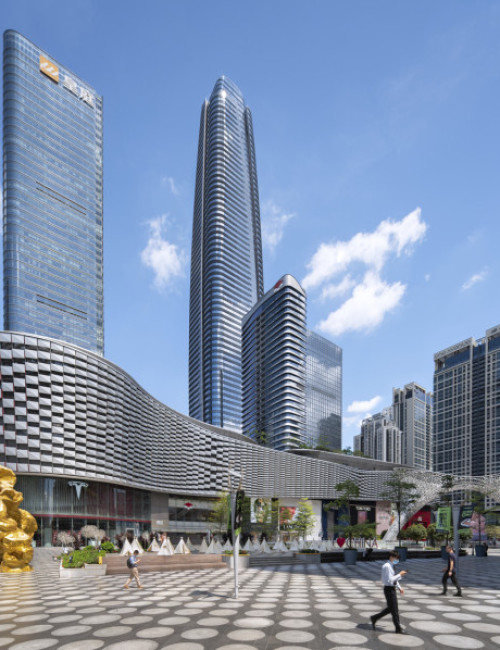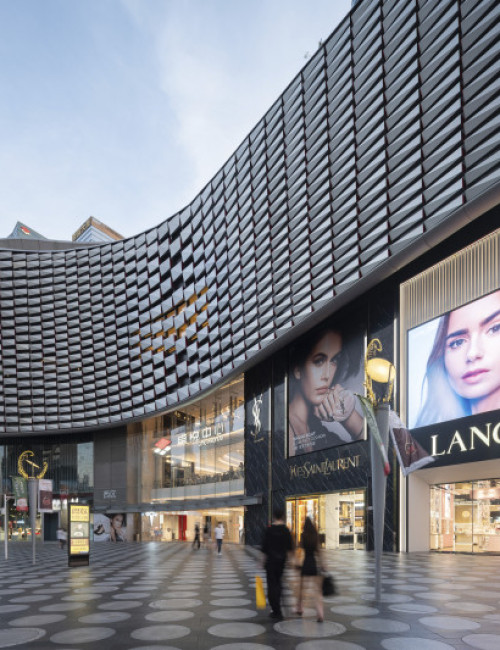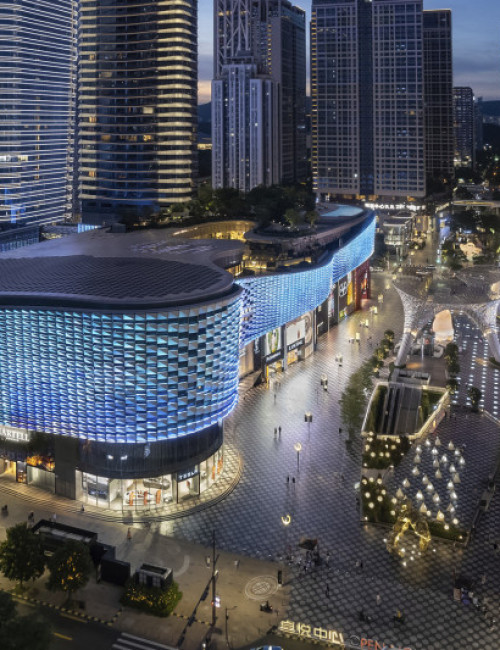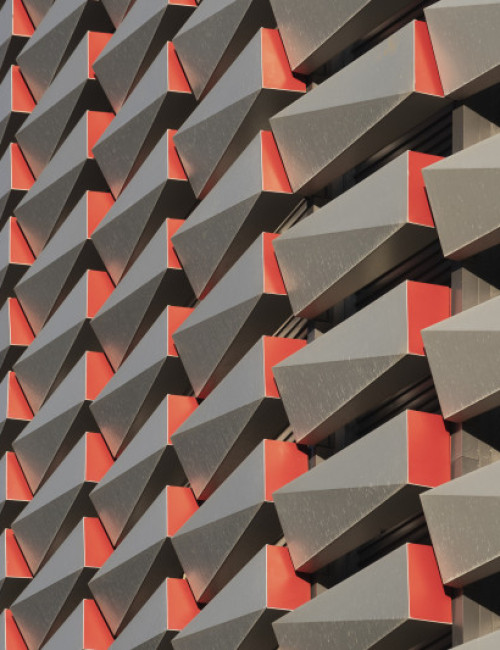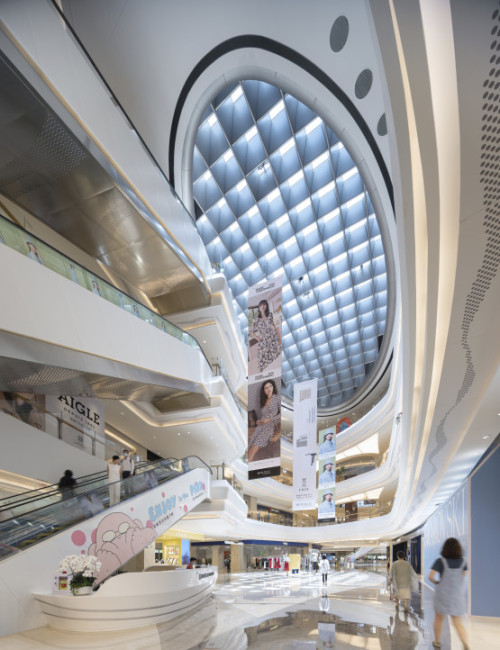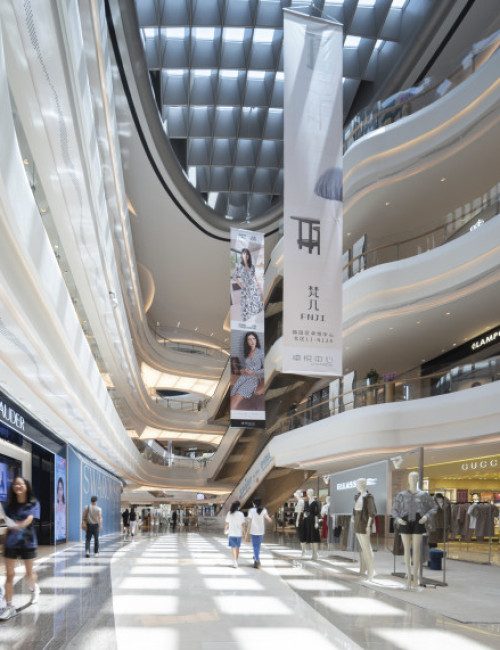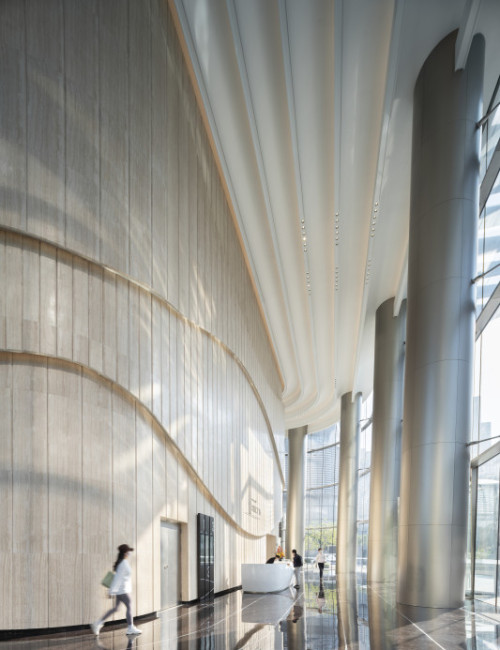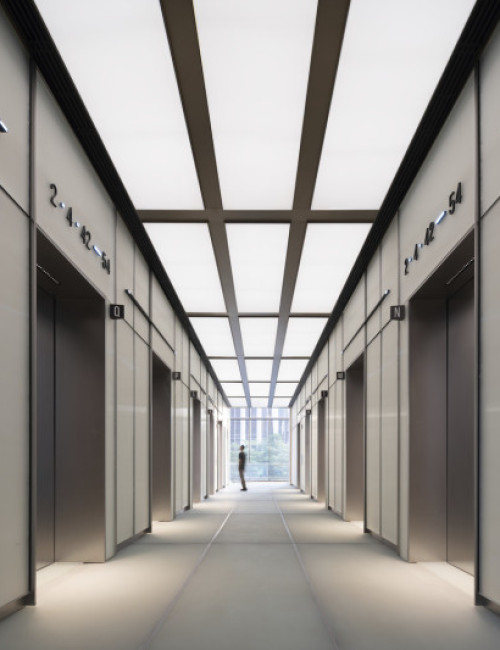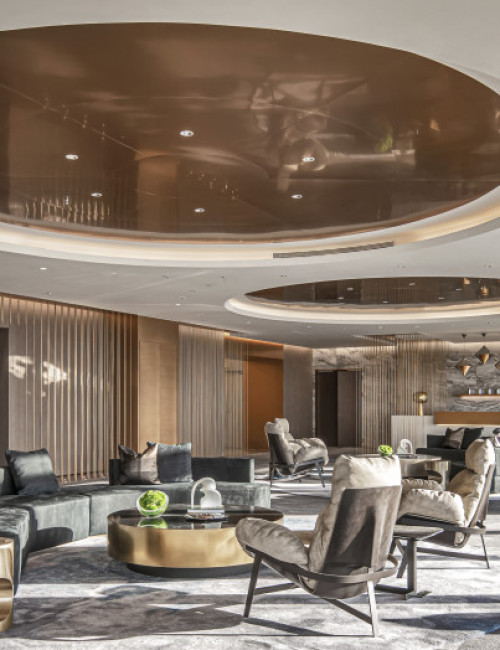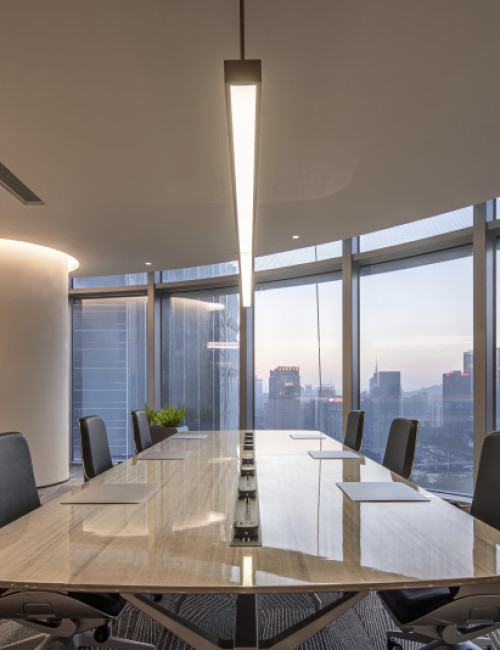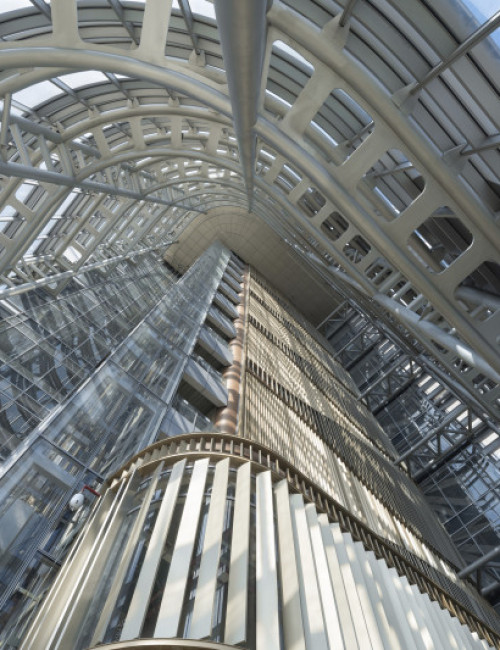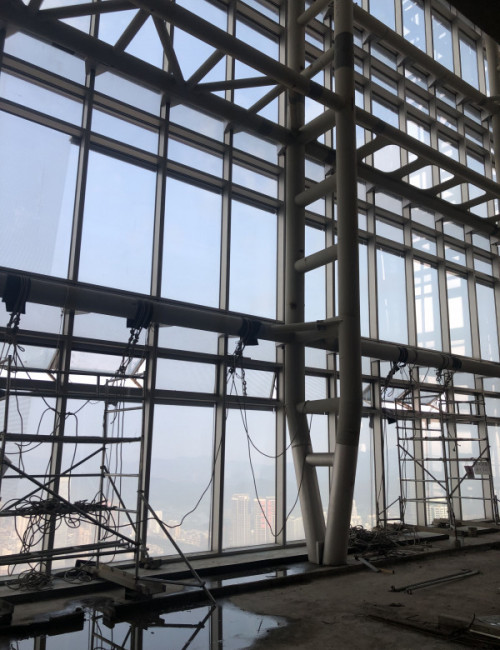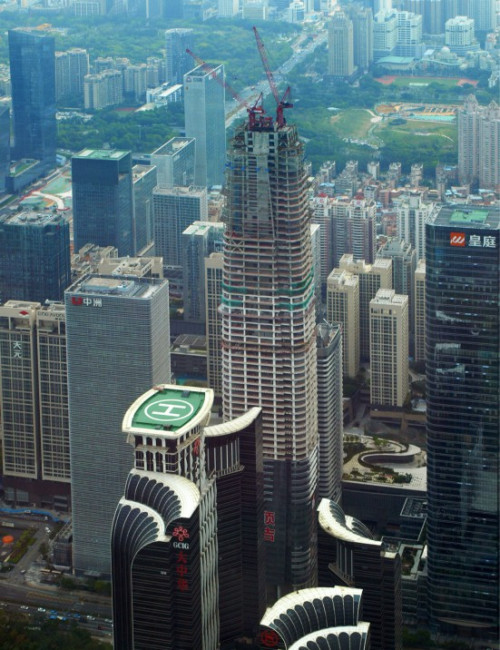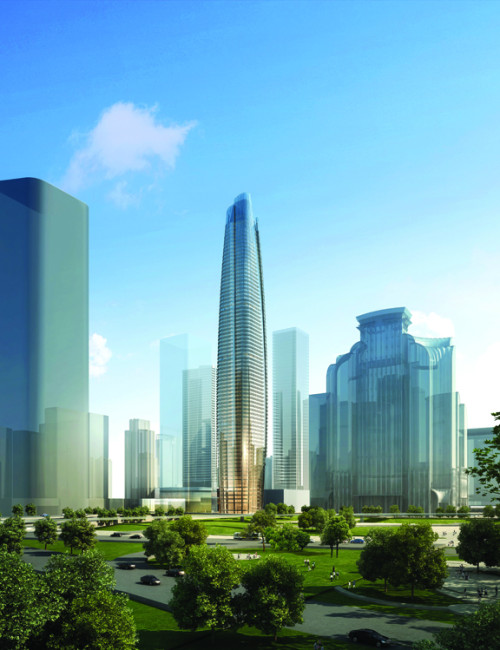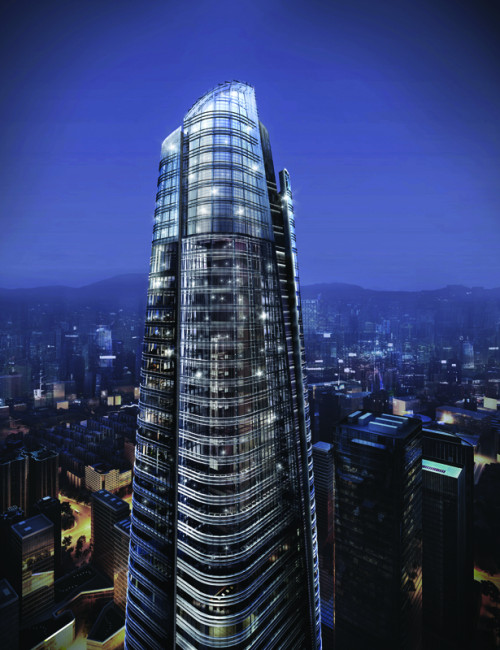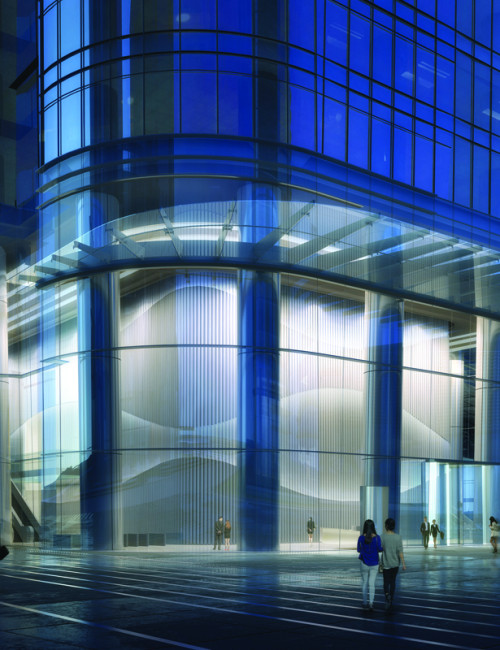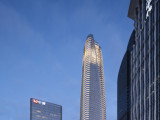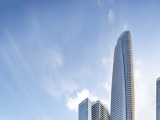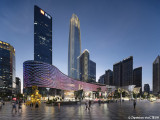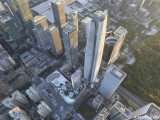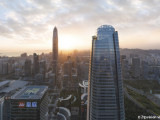Height rank
Dabaihui Plaza
Shenzhen
- CTBUH Drawing
- Facts
-
Metrics
You must be a CTBUH Member to view this resource.
- Structure
To Tip:
Height is measured from the level of the lowest, significant, open-air, pedestrian entrance to the highest point of the building, irrespective of material or function of the highest element (i.e., including antennae, flagpoles, signage and other functional-technical equipment).Architectural:
Height is measured from the level of the lowest, significant, open-air, pedestrian entrance to the architectural top of the building, including spires, but not including antennae, signage, flag poles or other functional-technical equipment. This measurement is the most widely utilized and is employed to define the Council on Tall Buildings and Urban Habitat (CTBUH) rankings of the "World's Tallest Buildings."Occupied:
Height is measured from the level of the lowest, significant, open-air, pedestrian entrance to the highest occupied floor within the building.
Above Ground
The number of floors above ground should include the ground floor level and be the number of main floors above ground, including any significant mezzanine floors and major mechanical plant floors. Mechanical mezzanines should not be included if they have a significantly smaller floor area than the major floors below. Similarly, mechanical penthouses or plant rooms protruding above the general roof area should not be counted. Note: CTBUH floor counts may differ from published accounts, as it is common in some regions of the world for certain floor levels not to be included (e.g., the level 4, 14, 24, etc. in Hong Kong).Below Ground
The number of floors below ground should include all major floors located below the ground floor level.Official Name
Dabaihui Plaza
Other Names
Shenzhen Gemdale Tower 1, Gemdale Gangxia Tower 1, Shenzhen Centre, Shenzhen Center, Great Parkway Plaza
Name of Complex
Type
Building
Status
Completed
Completion
2021
Country
City
Address
Function
A mixed-use tall building contains two or more functions (or uses), where each of the functions occupy a significant proportion of the tower's total space. Support areas such as car parks and mechanical plant space do not constitute mixed-use functions. Functions are denoted on CTBUH "Tallest Building" lists in descending order, e.g., "hotel/office" indicates hotel function above office function.
Serviced Apartments / Office
Structural Material
Both the main vertical/lateral structural elements and the floor spanning systems are constructed from steel. Note that a building of steel construction with a floor system of concrete planks or concrete slab on top of steel beams is still considered an “all-steel” structure as the concrete elements are not acting as the primary structure.
All-Concrete
Both the main vertical/lateral structural elements and the floor spanning systems are constructed from concrete which has been cast in place and utilizes steel reinforcement bars and/or steel reinforced concrete which has been precast as individual components and assembled together on-site.
All-Timber
Both the main vertical/lateral structural elements and the floor spanning systems are constructed from timber. An all-timber structure may include the use of localized non-timber connections between timber elements. Note that a building of timber construction with a floor system of concrete planks or concrete slab on top of timber beams is still considered an “all-timber” structure as the concrete elements are not acting as the primary structure.
Mixed-Structure
Utilizes distinct systems (e.g. all-steel, all-concrete, all-timber), one on top of the other. For example, a Steel Over Concrete indicates an all-steel structural system located on top of an all-concrete structural system, with the opposite true of Concrete Over Steel.
Composite
A combination of materials (e.g. steel, concrete, timber) are used together in the main structural elements. Examples include buildings which utilize: steel columns with a floor system of reinforced concrete beams; a steel frame system with a concrete core; concrete-encased steel columns; concrete-filled steel tubes; etc. Where known, the CTBUH database breaks out the materials used within a composite building’s primary structural elements.
Concrete-Steel Composite
Energy Label
LEED Gold
Height
375.6 m / 1,232 ft
Floors Above Ground
70
Floors Below Ground
4
# of Elevators
39
Top Elevator Speed
8 m/s
Tower GFA
145,200 m² / 1,562,920 ft²
Structural Details:
Rankings
-
By function
You must be a CTBUH Member to view this resource.
-
By material
You must be a CTBUH Member to view this resource.
Construction Schedule
Construction Start
Completed
Architect
Usually involved in the front end design, with a "typical" condition being that of a leadership role through either Schematic Design or Design Development, and then a monitoring role through the CD and CA phases.
Structural Engineer
The Design Engineer is usually involved in the front end design, typically taking the leadership role in the Schematic Design and Design Development, and then a monitoring role through the CD and CA phases.
MEP Engineer
The Design Engineer is usually involved in the front end design, typically taking the leadership role in the Schematic Design and Design Development, and then a monitoring role through the CD and CA phases.
Other Consultant
Other Consultant refers to other organizations which provided significant consultation services for a building project (e.g. wind consultants, environmental consultants, fire and life safety consultants, etc).
Other Consultant refers to other organizations which provided significant consultation services for a building project (e.g. wind consultants, environmental consultants, fire and life safety consultants, etc).
You must be a CTBUH Member to view this resource.
Owner
Shenzhen Excellence Commerce Property Limited Company
Developer
Gemdale Properties and Investment Corporation
Architect
Usually involved in the front end design, with a "typical" condition being that of a leadership role through either Schematic Design or Design Development, and then a monitoring role through the CD and CA phases.
Usually takes on the balance of the architectural effort not executed by the "Design Architect," typically responsible for the construction documents, conforming to local codes, etc. May often be referred to as "Executive," "Associate," or "Local" Architect, however, for consistency CTBUH uses the term "Architect of Record" exclusively.
Zhubo Design
Structural Engineer
The Design Engineer is usually involved in the front end design, typically taking the leadership role in the Schematic Design and Design Development, and then a monitoring role through the CD and CA phases.
The Engineer of Record takes the balance of the engineering effort not executed by the “Design Engineer,” typically responsible for construction documents, conforming to local codes, etc.
Zhubo Design
MEP Engineer
The Design Engineer is usually involved in the front end design, typically taking the leadership role in the Schematic Design and Design Development, and then a monitoring role through the CD and CA phases.
The Engineer of Record takes the balance of the engineering effort not executed by the “Design Engineer,” typically responsible for construction documents, conforming to local codes, etc.
Zhubo Design
Contractor
The main contractor is the supervisory contractor of all construction work on a project, management of sub-contractors and vendors, etc. May be referred to as "Construction Manager," however, for consistency CTBUH uses the term "Main Contractor" exclusively.
China Construction Third Engineering Bureau Co., Ltd.
Other Consultant
Other Consultant refers to other organizations which provided significant consultation services for a building project (e.g. wind consultants, environmental consultants, fire and life safety consultants, etc).
Other Consultant refers to other organizations which provided significant consultation services for a building project (e.g. wind consultants, environmental consultants, fire and life safety consultants, etc).
These are firms that consult on the design of a building's façade. May often be referred to as "Cladding," "Envelope," "Exterior Wall," or "Curtain Wall" Consultant, however, for consistency CTBUH uses the term "Façade Consultant" exclusively.
Zho Yue Architectural Design and Consulting
Grand Sight Design International; Lighting Planners Associates
Fortune Consultants, Ltd.
Material Supplier
Material Supplier refers to organizations which supplied significant systems/materials for a building project (e.g. elevator suppliers, facade suppliers, etc).
Material Supplier refers to organizations which supplied significant systems/materials for a building project (e.g. elevator suppliers, facade suppliers, etc).
China Construction Steel Structure Corporation
CTBUH Awards & Distinctions
Best Tall Building, by Height, 300-399 meters 2023 Award of Excellence
2023 CTBUH Awards
Best Tall Building, by Region, Asia 2023 Award of Excellence
2023 CTBUH Awards
Life Safety Design Award 2022 Award of Excellence
2022 CTBUH Awards
CTBUH Initiatives
Top Company Rankings: The World’s 100 Tallest Buildings
13 October 2016 - CTBUH Research
Research
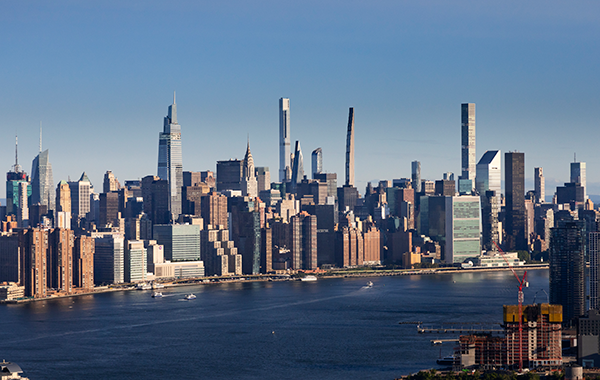
03 January 2022
Interactive Study on Tall Buildings in 2021: A State of Current Construction
CTBUH Research
The Council on Tall Buildings and Urban Habitat has released its annual report, CTBUH Year in Review: Tall Trends of 2021, part of the Tall...
About Dabaihui Plaza
Amid the rapid development of Shenzhen’s Zhongxin District, Dabaihui Plaza is located near the Great China International Exchange Square, along a distinct row of skyscrapers that define the central business district. The tower, with its columnar outline and layered form, represents the high-quality urban visage of Shenzhen, China’s design capital.
The tower will be a prominent visual landmark. Fronting the Crystal Island development, it will be visible from the Civic Centre and Opera House. The exterior is defined by four overlapping façade screens, which are expressed at the pinnacle as they cut away to reveal an occupied dome. This form was inspired by the city’s flower, the bougainvillea. A subtle tapering effect provides both a chiseled profile and an opportunity to maximize the office footprint strategically at higher office zones while still offering appropriately sized residential units. As the commanding core of a high-end complex, the tower takes cues from its cultural and geographical context with a fluid design inspired by nature.
At the base, a retail podium forms the border of a vibrant public square, and is wrapped by a dynamic ribbon of illuminated panels, while a smaller residential tower of 54 floors is perched above, drawing benefits from an extensive garden on the top of the podium’s roof. Through the basement levels, the residential and office towers are connected with nearby subway stations, which are also linked with the public square, making the area a vital center for the greater district. Chinese landscapes, as well as Shenzhen’s rich setting between the undulating mountains and the sea, are references for a design that aims to be engaging and well connected.
CTBUH Awards & Distinctions
Best Tall Building, by Height, 300-399 meters 2023 Award of Excellence
2023 CTBUH Awards
Best Tall Building, by Region, Asia 2023 Award of Excellence
2023 CTBUH Awards
Life Safety Design Award 2022 Award of Excellence
2022 CTBUH Awards
Subscribe below to receive periodic updates from CTBUH on the latest Tall Building and Urban news and CTBUH initiatives, including our monthly newsletter. Fields with a red asterisk (*) next to them are required.
View our privacy policy

